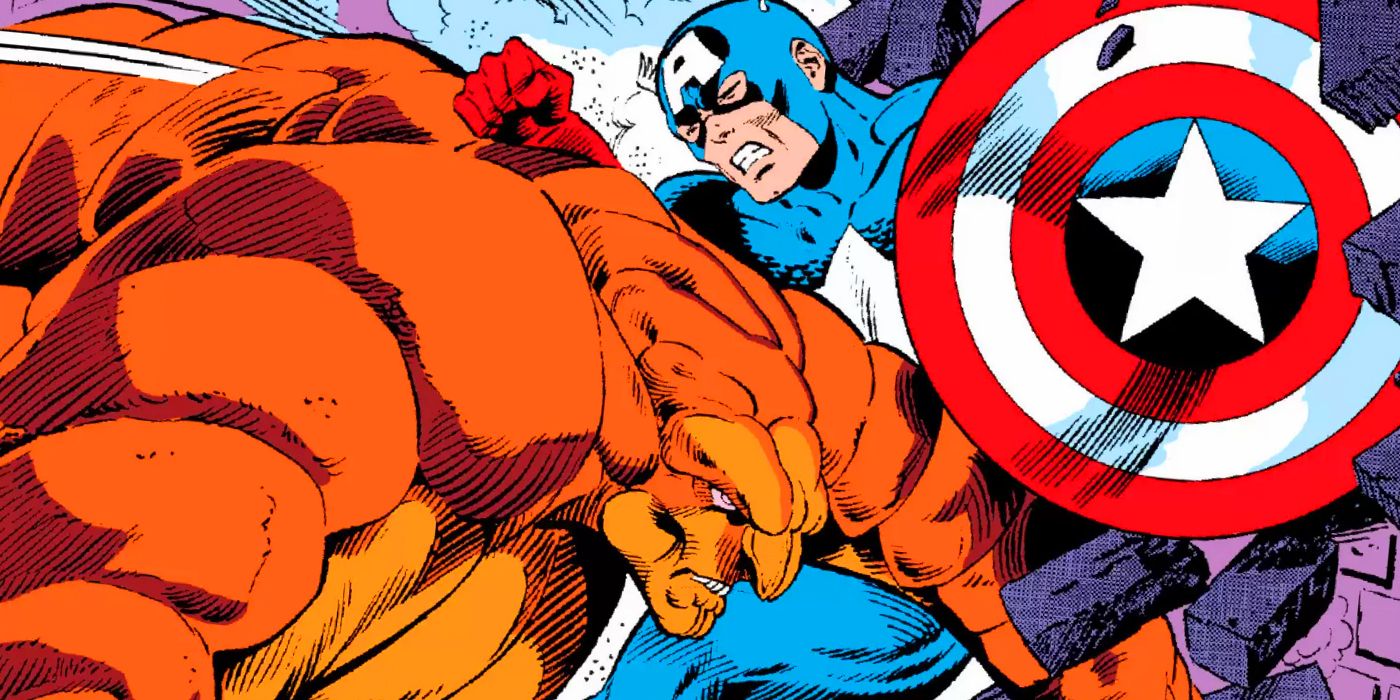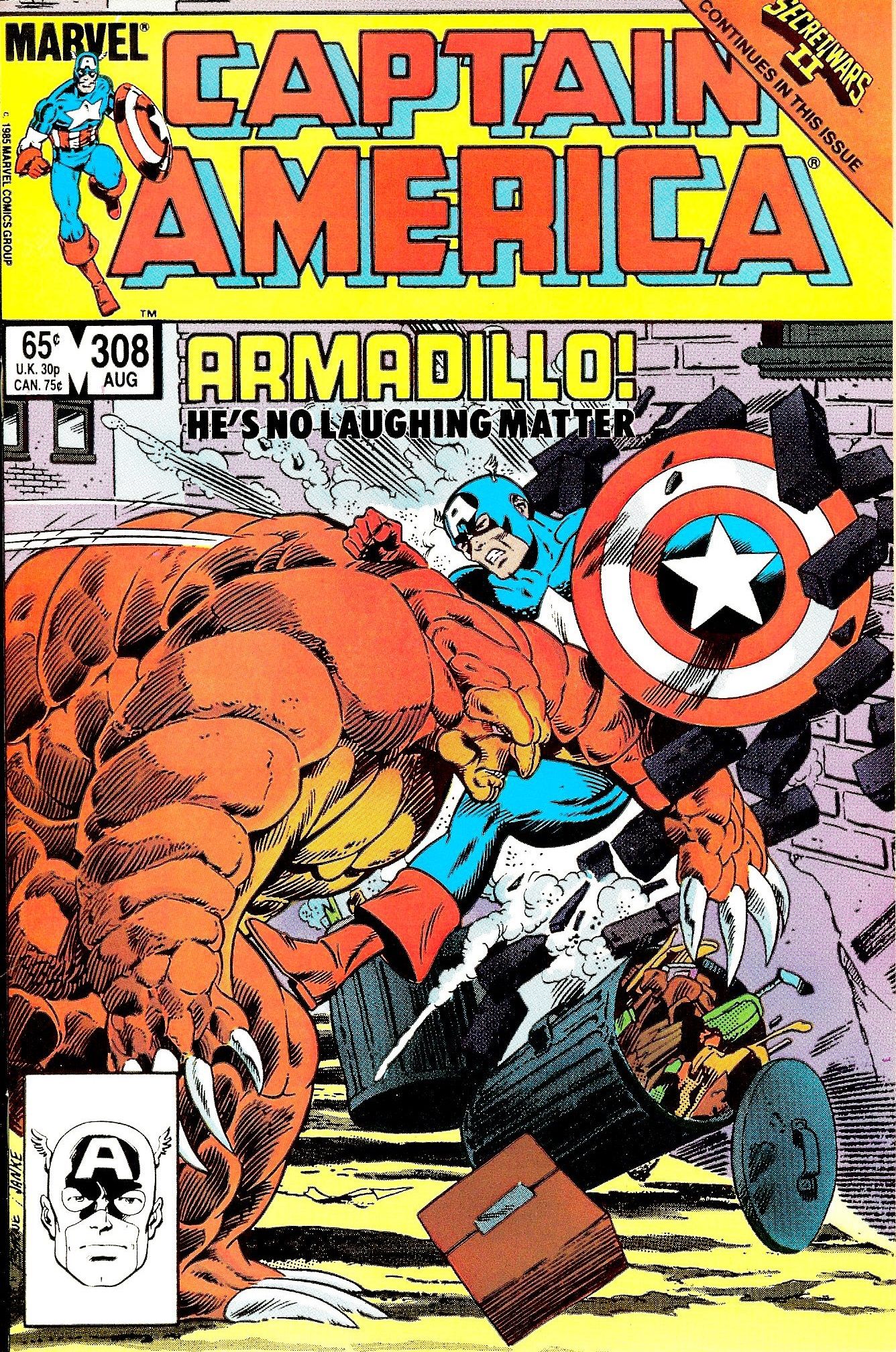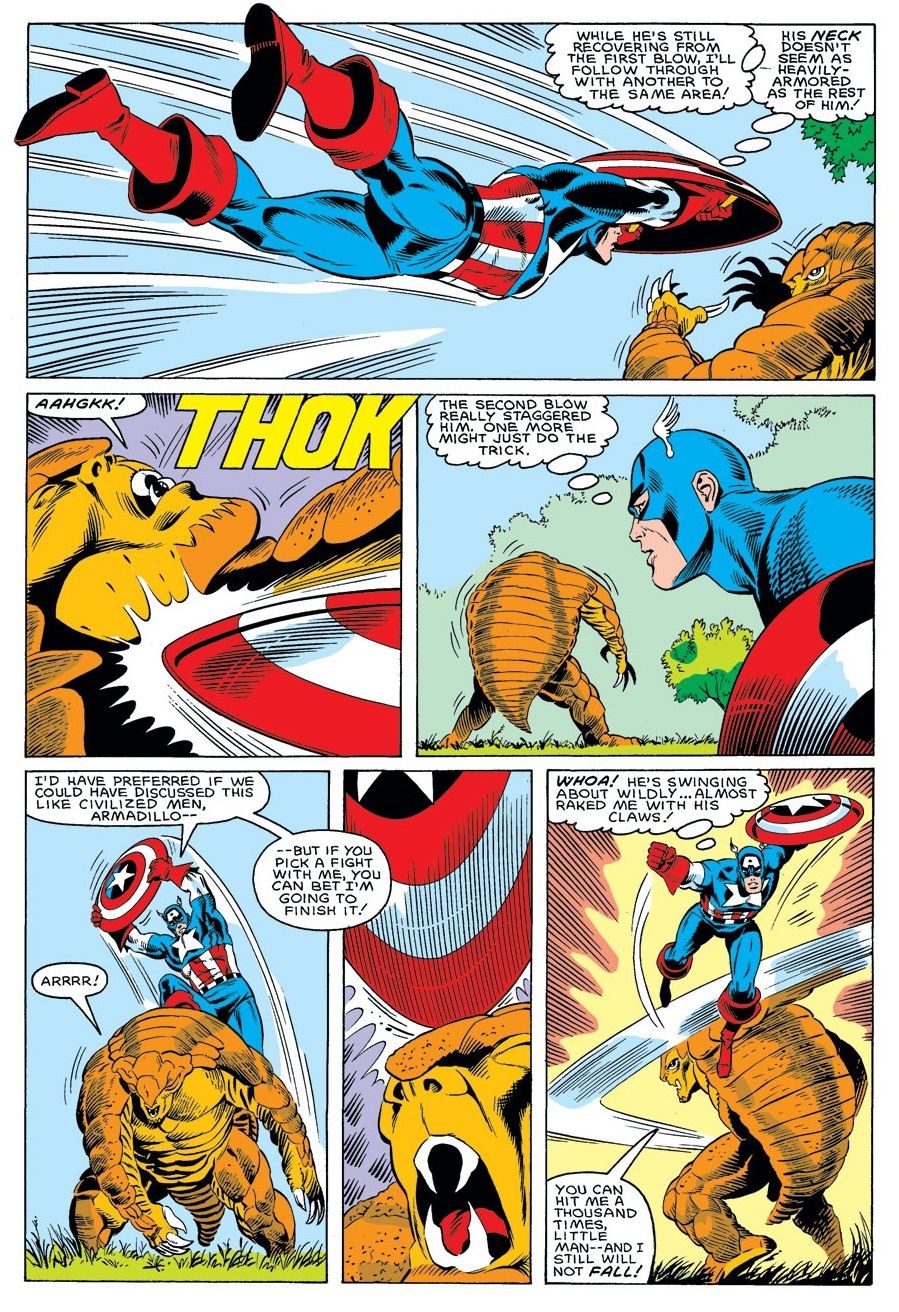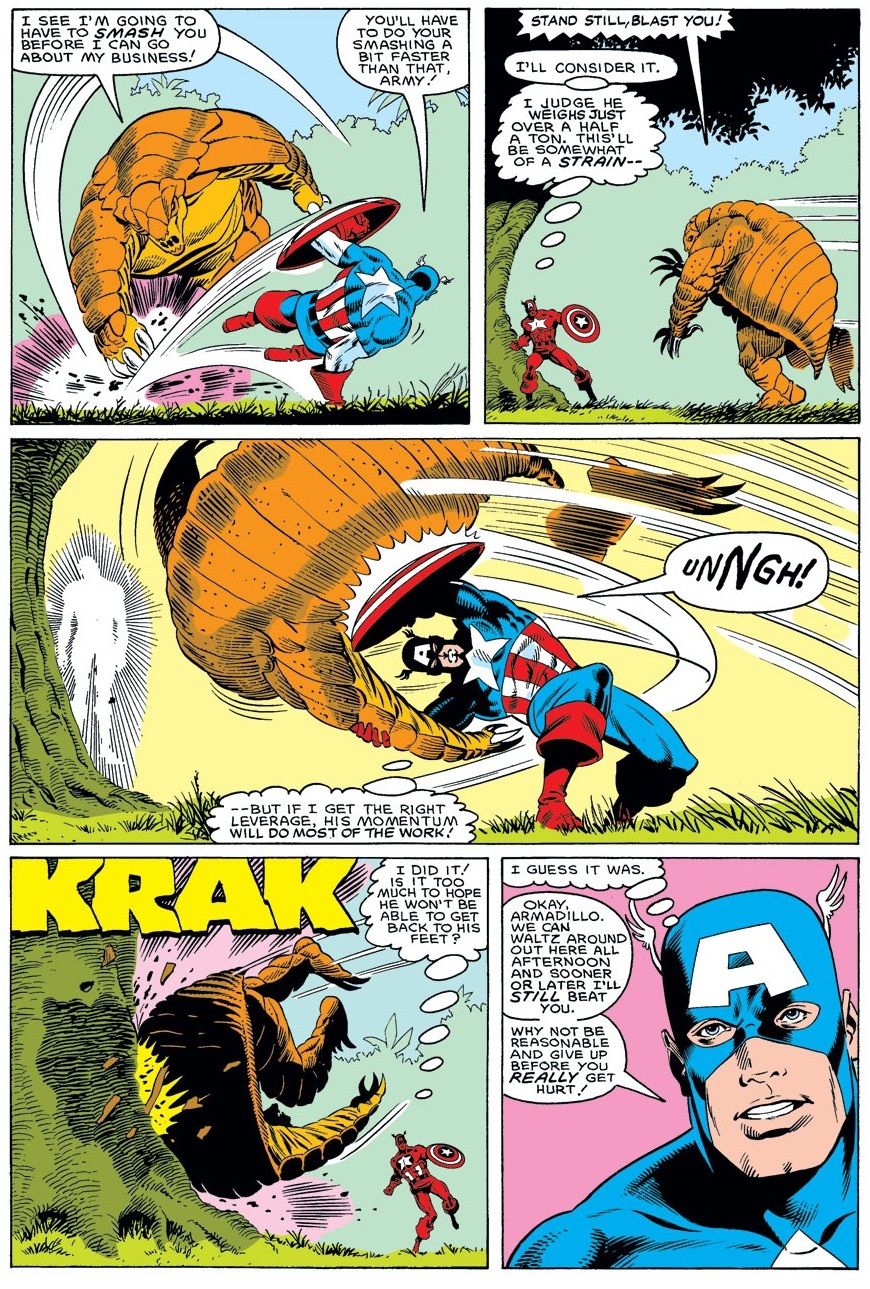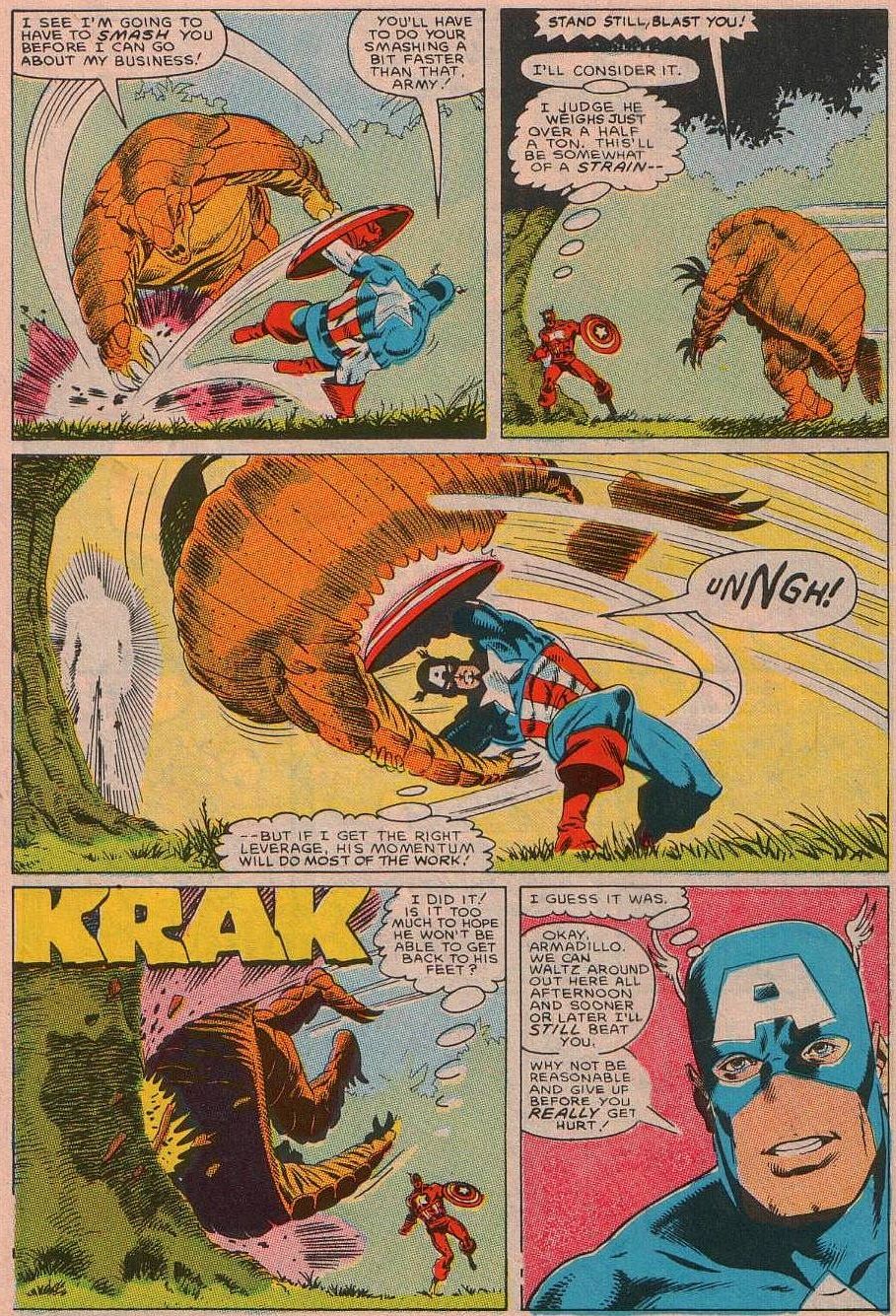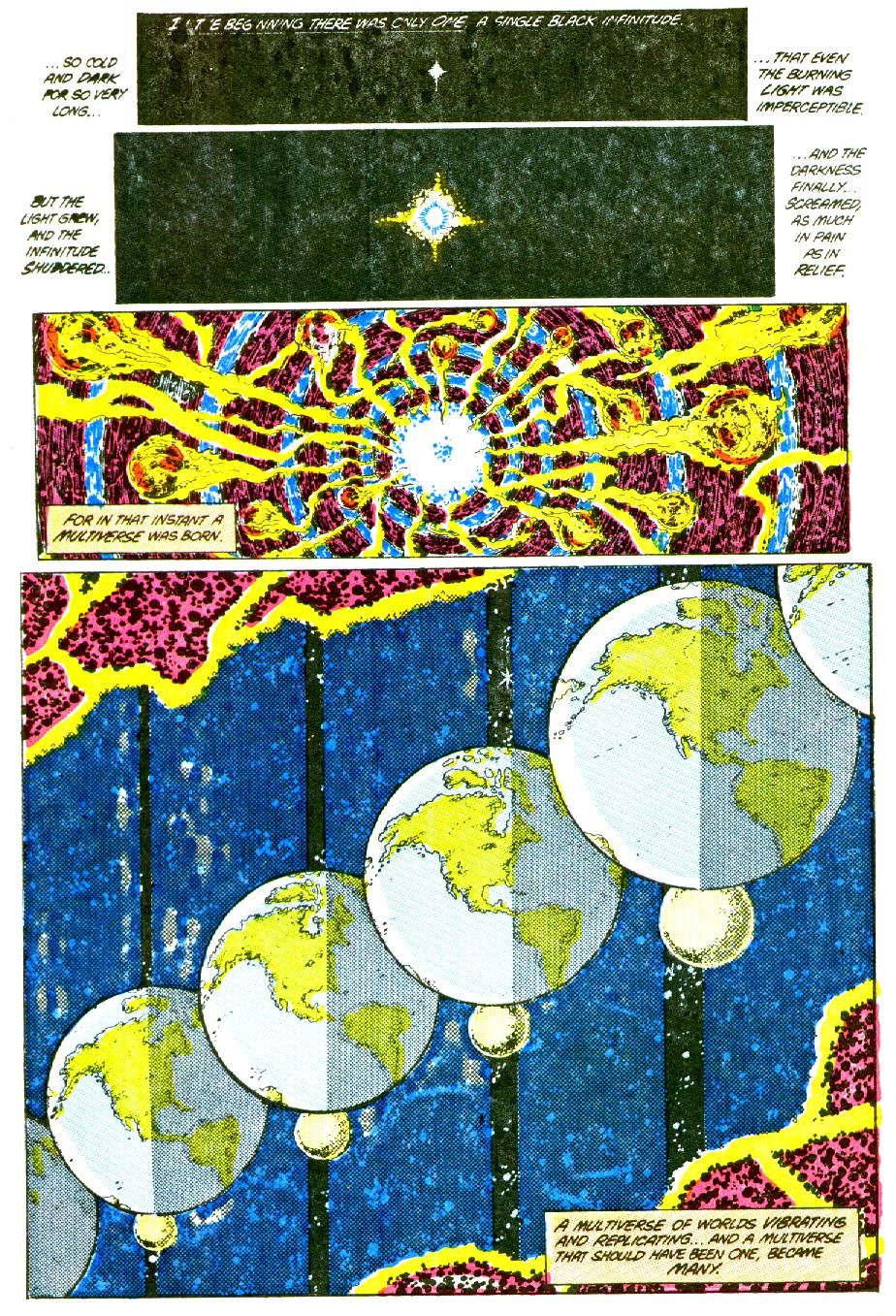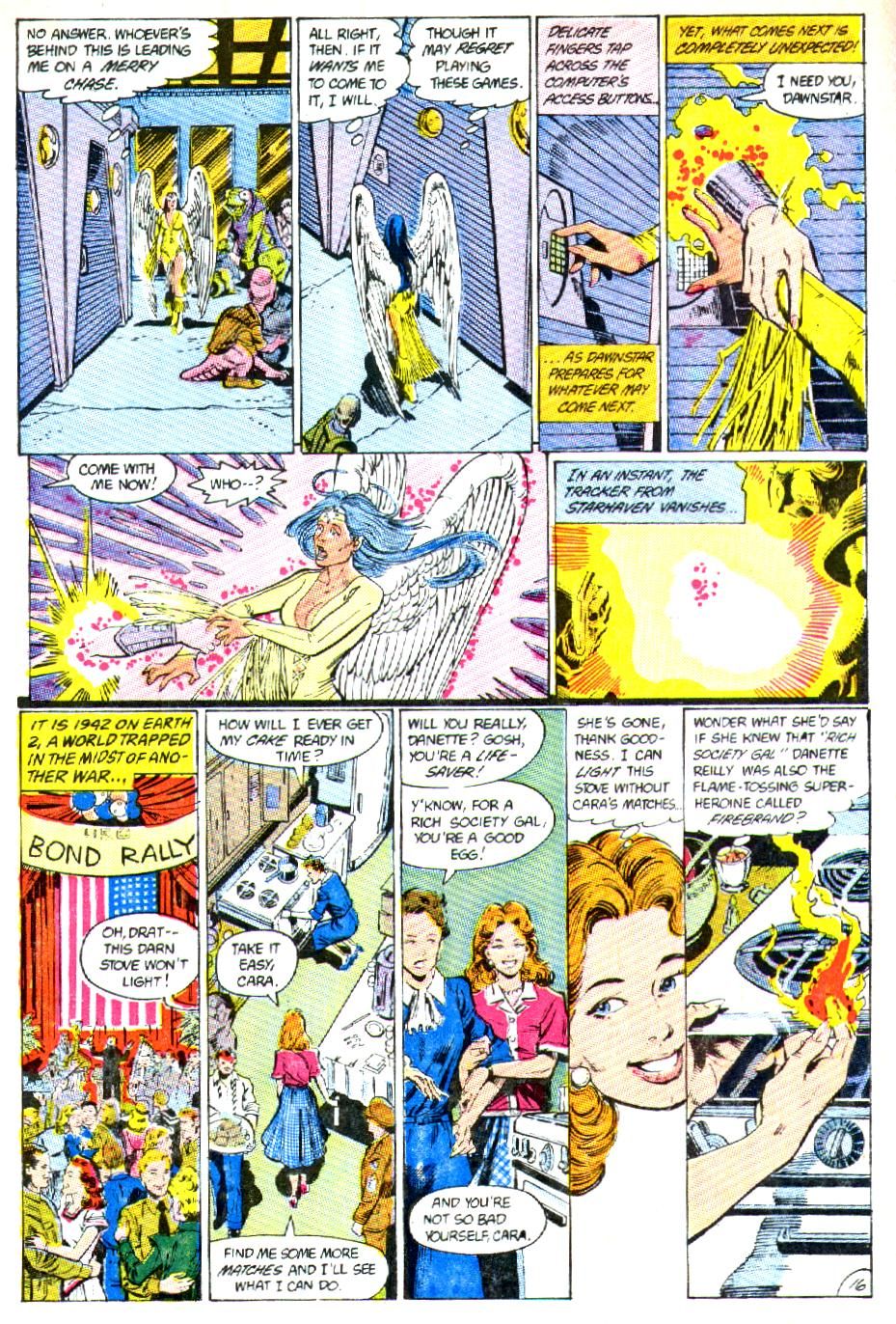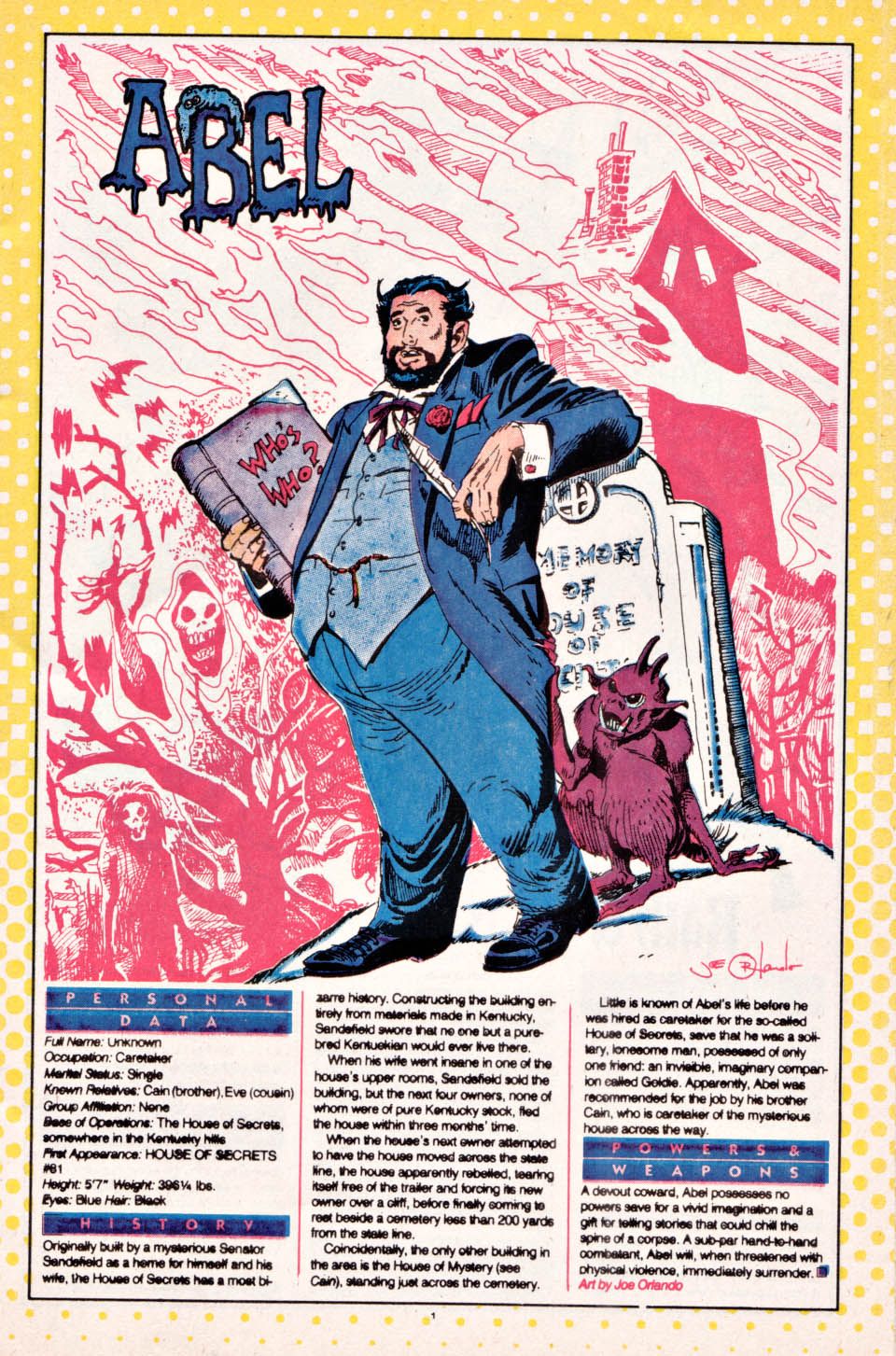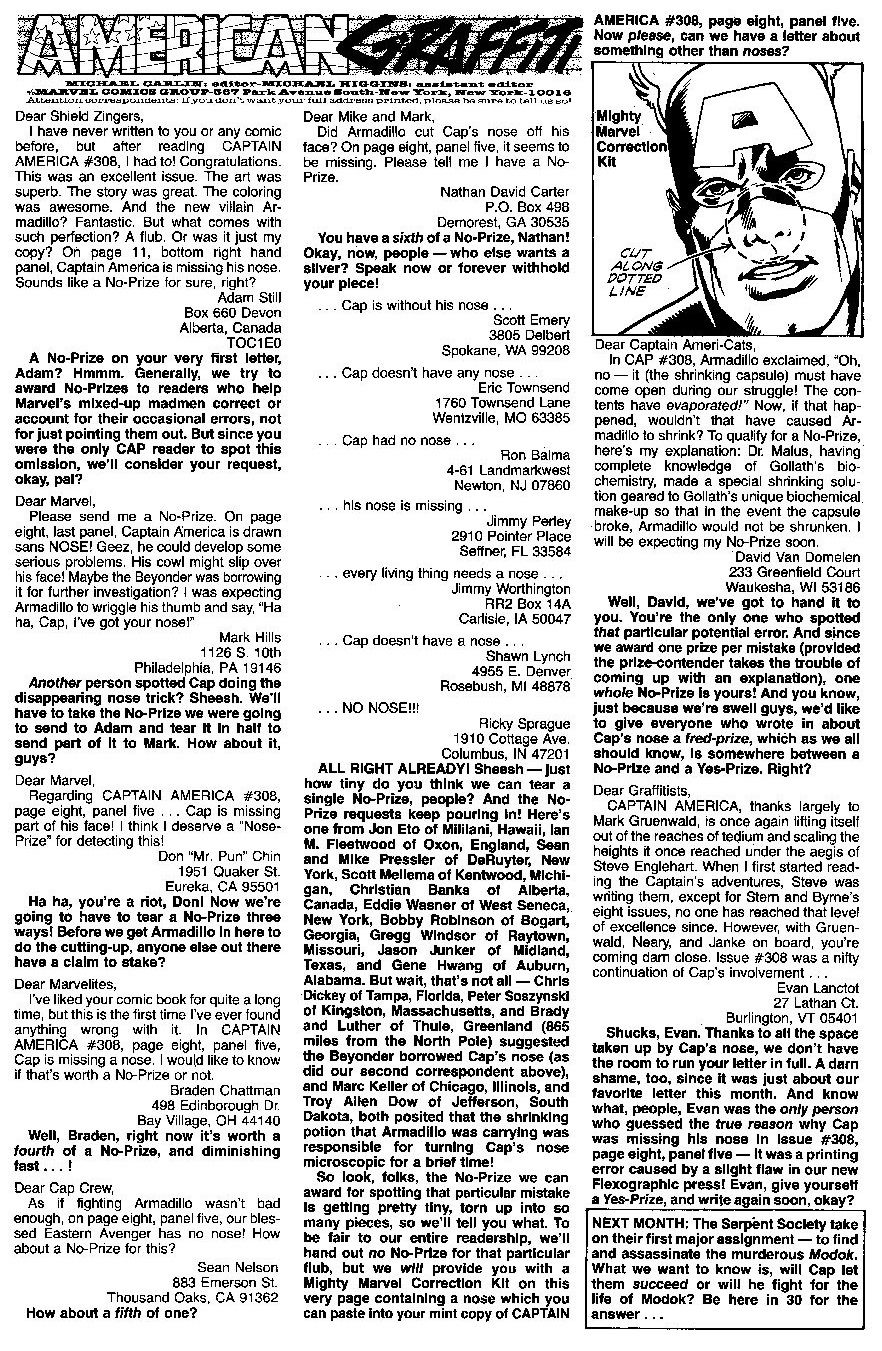In the latest Comic Book Legends Revealed, discover how a fluke coloring accident left Captain America missing an important body part in a comic.
Welcome to Comic Book Legends Revealed! This is the eight hundred and ninth installment where we examine three comic book legends and determine whether they are true or false. As usual, there will be three posts, one for each of the three legends.
NOTE: If my Twitter page hits 5,000 followers, I'll do a bonus edition of Comic Book Legends Revealed that week. Great deal, right? So go follow my Twitter page, Brian_Cronin!
COMIC LEGEND:
An artist accidentally forgot to draw Captain America's nose in a panel of a comic book.
STATUS:
False
I've done a bunch of different themed Comic Book Legends Revealed installments over the years, and some of them are bit more esoteric than others, but I have to say that this installment's themed legends are one of the strangest themes I have ever used in a Comic Book Legends Revealed. I wonder if you'll guess the theme BEFORE part two of this installment's legends is released!
Captain America #308 (written by Mark Gruenwald and drawn by Paul Neary and Dennis Janke) was an unusual comic book for a number of different reasons. First of all, it was one of the very first Secret Wars II tie-in comic books and the extent of the tie-in was that the Beyonder shows up late in the issue and decides that he will use Captain America's body as the basis of his corporeal form (later, he will adjust based on the look of, of all people, Michael Jackson).
Not only that, but the issue introduced a new supervillain known as the Armadillo, which I actually addressed in an old Comic Book Legends Revealed was based on writer Mark Gruenwald doing a little in-joke based on the fact that, during a period in the 1970s, Marvel's editors would not sign off on their letters, but would rather just be an anonymous voice, which would later turn into a joke that the anonymous editors were actually armadillos.
Gruenwald explained to Dwight Jon Zimmerman in David A. Kraft's brilliant Comics Interview (issue #54, to be precise), that the Armadillo "is just a silly monster I wanted to throw in as kind of a joke on the old Marvel armadillo thing in the letters page."
The setup of the issue is that Cap is visiting the then-new West Coast Avengers headquarters in California when he is attacked by the brand-new villainous Armadillo...
Certainly seems like a normal enough comic book fight, even with a bit of a sillier than normal villain, right?
Well, that's what it looks like NOW, as the modern reprintings (and the various digital collections) have the story corrected from how it was originally published, but here is what the above comic book page looked like when it was actually printed back in 1985...
Yes, Captain America does, in fact, not have a nose in this page. So, what's the deal, did Neary or Janke just fall down on the job and simply forget to draw a nose for the Star-Spangled Avenger?
No, in actuality, it was all due to a short-lived printing process called Flexographic.
The great K.C. Carlson wrote about it a little bit in his old Westfield Comics column, talking about some Arthur Adams' comics from 1985, "You see, I remember that when these issues were first published, it was the dawn of the age of Flexographic printing for comics, and the good folks at the long-gone Sparta, Illinois, printing plant were still working out the bugs in this seemingly too-tough-to-be-tamed printing technique. Early comics printed with this system featured artwork with thin black lines (like Art Adams’ work!) being broken or not printing at all, too-bright color values, and the occasional splotchy printing with huge areas where color dropped out completely. (For other horrible examples of early Flexographic comic printing, see DC’s original printings of Crisis on Infinite Earths #1 and Who’s Who In the DC Universe #1 & 2)."
The term "Flexographic" is because the process involved a plastic plating as opposed to the traditional aluminum plating and it involved a water-based ink instead of the traditional oil-based ink. The result was much more vibrant colors than normal, but there were also some major problems, as Carlson noted above, which is that black lines (including lettering) was often fuzzy, there would be more splotches in the art and, most unforgivably, sometimes the plates would fall apart from use and you'd lose whole layers of the art, like, you know, Captain America's nose.
One of the most famous comics printed with this process was Crisis on Infinite Earths #1 and George Perez was rightly aghast at the results, with pieces missing from the art...
and just overall very blotchy, unfinished coloring...
As noted, the other big problem was DC's Who's Who, with the first issue having hard-to-read lettering and blotchy colored backgrounds...
Marvel had fun with its screw-up, as Captain America #312 included a cut-out where you could "fix" the screwed-up panel by pasting the cut-out panel into the other issue...
As you can imagine, there were soooooooo many attempts at No-Prizes in that issue, although apparently only one person actually correctly guessed that it was the Flexogaphic printing that was the problem.
SOME OTHER ENTERTAINMENT/SPORTS LEGENDS!
Check out some other entertainment and sports legends from Legends Revealed:
1. Were Luke and Leia Meant to be Siblings When They Kissed in Empire Strikes Back?
2. Was Waylon Smithers Originally Going to be Black and Married with a Wife and Kids?
3. Is the Peter Gabriel Song “Sledgehammer” About Sex?
4. Was OJ Simpson Originally Cast as the Terminator?
PART TWO SOON!
Check back later for part 2 of this installment's legends!
Feel free to send suggestions for future comic legends to me at either cronb01@aol.com or brianc@cbr.com

